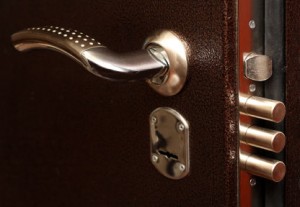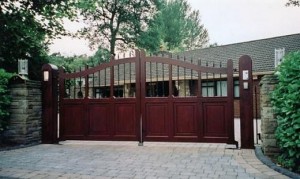Everyone has their own idea of what constitutes a ‘necessary’ standard of safety. Do you really need to install floodlights, biometric locks, window films, deadbolts, security screens AND have home security monitoring done? Perhaps all this would be overkill for the average homeowner, but it is better to get expert advice on which to base your decision.

Today we check out the top 14 tips for securing your home to the standards of those in the know – the police.
1. Make sure the street number is clearly visible from the street and can be seen at night time
This allows both your home security monitoring company and the police to find your house fast in an emergency situation.
2. If you live in a housing complex, is there a clear map at the entrance?
The streets in estates and complexes are often not available on GPSs.
3. Is there signage in the estate that provides a hiding place?
Crims will notice it…
4. Is the area surrounding your home clear and open?
The more privacy and cover there is in your home, the more privacy a burglar can work in. This also makes it more difficult for home security monitoring companies to determine whether there has been a perimeter breach, if your alarm is activated.
5. Are your floor, walls and ceiling solidly constructed?
Weatherboard and fibro walls provide a possible entry point.
6. Is the roof tiled?
It is simple for burglars to lift tiles and drop into your house through the manhole cover. Your home security monitoring alarm should be set up to monitor the roof cavity also.
7. Is your house designed with points that allow it to be climbed from the outside?
Attached garages are common culprits, as are mezzanines and some architectural features.

8. For businesses and estates, are garbage bays locked?
These provide a common entry point.
9. How many entry and exit points are present?
For higher levels of home security, there should be either very few entry and exit points, or a range of points for people to come in that are very open, clear and well-lit.
10. Are fences constructed with an easy-climb design?
Many standard residential fences are constructed with three beams on one side that allow very easy climbing.
11. Are gates fitted?
Perimeter fencing is of little use if somebody can just slip in through a gate. To add to the safety provided by your home security monitoring, take steps to make sure your gate is easy-close. Automatic closers remove the temptation to just duck inside from the garage without going back out the front to close the gate.
12. Is your landscaping well-maintained?
Choose or modify the shrubs and greenery in your yard to be easy-care varieties that require minimal trimming, to help reduce coverage for burglars. Again, this also helps home security monitoring firms determine if a perimeter breach has occurred, as the burglar has fewer places to hide.
13. Are motion-detector lights installed?
To properly complement your home security monitoring system, you should have full coverage of your property (backyard included) with motion sensor lights.
14. If you have CCTV monitoring, do the lights provide sufficient light to get images from the footage?
There are quite a few low-lux CCTV camera systems available, but it is often more cost effective to simply install motion detector lights and use a system requiring higher light levels, to support your home security monitoring system.
Stay tuned … the police have plenty more expert tips for ensuring your property is secure, and we’ll update this set in the future!